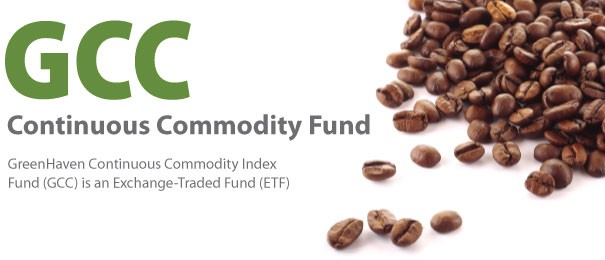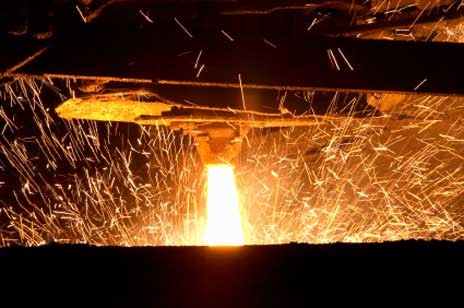New Kinds of Funds for Commodities
Post on: 1 Июнь, 2015 No Comment

Fund companies are tweaking their strategies for picking a winning mix of metals and other materials
But in the past year or two, new products have flooded the market with often-untested innovations that aim to beat—not just match—returns of well-known commodities indexes.
Investors have pumped hundreds of millions of dollars into the newfangled funds. The money flowed even as commodity prices dropped last year and other players reduced their bets on commodities markets. Overall, mutual funds and exchange-traded products that offer exposure to a broad range of commodities had $50.7 billion in assets at year-end, up from $258 million in 2002, according to Morningstar Inc. a fund-tracking firm.
Ryan Heshka
The catch is that many of the latest commodity products have short track records. We haven’t seen these funds in action long enough to know if they’re any good, says Kathryn Young, a mutual-fund analyst at Morningstar.
Here’s a guide to Commodities Investing 2.0:
The Pimco fund follows the Dow Jones-UBS Commodity Index, which includes 20 commodities from aluminum to zinc. During the long commodity rally that began in the past decade, the strategy has paid off; an investor who put in $10,000 the year the fund launched would have more than $22,000 today, Morningstar says.
ENLARGE
Partly that’s because the fund aims to beat the index—for instance, by investing whatever funds aren’t needed to secure its bets on commodities futures in Treasury inflation-protected securities, which rise in value with inflation.
But by and large, the fund and the index move together. In 2008 and 2011, when the index declined, the fund fell in value, too. Last year, the index fell 13% and the fund fell 8%.
The same is largely true for the largest exchange-traded products that track established pools of commodities, whether the iPath Dow Jones-UBS Commodity Index Total Return exchange-traded note or its main rival, the iShares S&P GSCI Commodity-Indexed Trust fund. What happens to the index more or less happens to investors, for better or worse.
Another fund, PowerShares DB Commodity Index Tracking. tracks an index but has wider latitude about buying longer-dated monthly contracts, rather than those closest to delivery.
Ferreting Out Performance
The founders of SummerHaven Investment Management LLC, a Stamford, Conn. firm, aimed for something different—a commodity index that doesn’t passively track a bucket of commodities but actively tries to ferret out the materials most likely to rise.
We didn’t like what was out there, says Kurt Nelson, a co-founder and the head of marketing at SummerHaven. As investors started moving to this space, they started looking for outperformance.
The ETF SummerHaven launched in August 2010, U.S. Commodity Index. has 27 commodities it can invest in. But at any given time, it only has bets on 14.
Each month, the fund’s managers choose seven commodities, within set rules, whose longer-dated monthly contracts are cheapest in comparison with the contract closest to expiration. That’s an indication current supplies are tight, which may foreshadow price increases.
That strategy also aims to turn a disadvantage facing many commodity funds—the cost of selling an expiring monthly contract and buying an often-more-expensive new one—into an asset, by trying to profit when the fund rolls its holdings into a new contract.
The remaining seven commodities the fund invests in are those that have seen the greatest price gains over the past 12 months. The fund invests in the 14 commodities in equal amounts, a little over 7% each.
The changing cast of commodities is a significant departure—it’s somewhat akin to trying to figure out which stocks in an index are poised to rise, and only betting on half of them.
You might say it’s not indexing, says Matt Hougan, president of ETF analytics at IndexUniverse.com, which tracks funds. It may be that traditional indexing isn’t the best idea in the commodities space.
So far, investors like the concept, judging from the fund’s $400 million in assets, according to Morningstar data.
Still, USCI’s fate is closely tied to the broader commodities markets, as it logged a 9.5% loss in 2011 and an 8.8% gain in 2012 through February. In contrast, the PowerShares DB Commodity Index Tracking ETF, which follows a more traditional Deutsche Bank index, fell 2.6% in 2011 and has risen 9.2% year-to-date.
For both funds, the basic rule has applied—if prices go up, investors prosper. If not, returns melt.
Going Short and Long
Other new funds try to turn that logic on its head, to one degree or another.
Forward Management LLC, a San Francisco-based firm that manages $5.1 billion in assets, launched Forward Commodity Long/Short Strategy at the end of 2010. Each month the fund managers screen 24 commodities and choose the 10 that have either risen or fallen in value the most, based on performance over one to six months, depending on volatility.
Then they bet on those top 10 to continue on their current trend, either climbing or dropping. The managers allocate 10% of the month’s wager to each one, says Nathan Rowader, the portfolio manager.
The aim is to profit regardless of which direction commodity markets are headed. In 2011, when prices fell broadly, the fund, which started trading that January, logged a 9.7% gain, according to Morningstar. The fund has $157 million in assets.

But this year’s results show a drawback to the fund’s approach—the potential for sharp reversals in an already risky asset class. As commodities rose in early 2012, the fund suffered and is down 6.3% year-to-date.
In June 2010, meanwhile, Pimco launched Pimco CommoditiesPLUS Short Strategy. a fund that bets against commodities in the DJ-UBS index. The fund gained 10.3% last year.
This is relatively new, Ms. Young, the Morningstar analyst, says of funds that can short commodities. Long-only commodity funds are volatile enough.
The effect can also be to reduce volatility of returns, however. Guggenheim Long Short Commodities Strategy. which bets on commodity prices to rise or fall, fell just 1.8% in 2011 and is up 3.7% this year, according to Morningstar.
Few Holds Barred
Managers of the new products follow clear written guidelines about how to place their bets. But some have more leeway than others. Managers at Invesco Balanced-Risk Commodity Strategy. which launched in November 2010, use roughly equal exposure to four commodity sectors—agriculture, precious metals, industrial metals and energy—as a benchmark. Yet the managers can also use different commodities and investment tools to get the exposure, can buy commodities or sell them short, and vary from the benchmarks if they think they see an opportunity.
Similarly, Highbridge Dynamic Commodities Strategy. launched in January 2010, invests in many of the same commodities as the traditional indexes. It already has $2.5 billion in assets. But it can bet on related assets, too, such as the Australian dollar, which can swing with commodity price moves. The managers also choose which assets to invest in at any given time, and how much to allocate to each one.
We can actively short them, as well, says Sassan Alizadeh, senior portfolio manager and managing director at Highbridge Capital Management, a unit of J.P. Morgan Asset Management.
As of Nov. 30, the fund was most heavily invested in precious metals and financial commodities, with a smaller position in energy. It had short positions in industrial metals and agricultural commodities.
Active Management
The idea is that an active manager will be able to react more quickly and effectively to lock in gains and avoid losses.
In 2011, the Invesco fund lost 8.6% while the Highbridge fund lost 7%, both beating the performance of the DJ-UBS Commodity Index. This year, the Invesco fund is up 10.5% and the Highbridge fund is up 6.6%, while the index is up 5.2%.
One thing to note: Actively managed funds can have higher expenses, which can erode gains. The Highbridge fund, for instance, has expenses of 1.64%, according to Morningstar. By comparison, the expenses for many of the funds launched earlier that track established commodity indexes are under 1%.
With an active strategy, says Ms. Young, you’re probably paying for it. That may make some investors nostalgic for a simpler time.
Mr. Pleven is a staff reporter for The Wall Street Journal in New York. Email him at liam.pleven@wsj.com .














